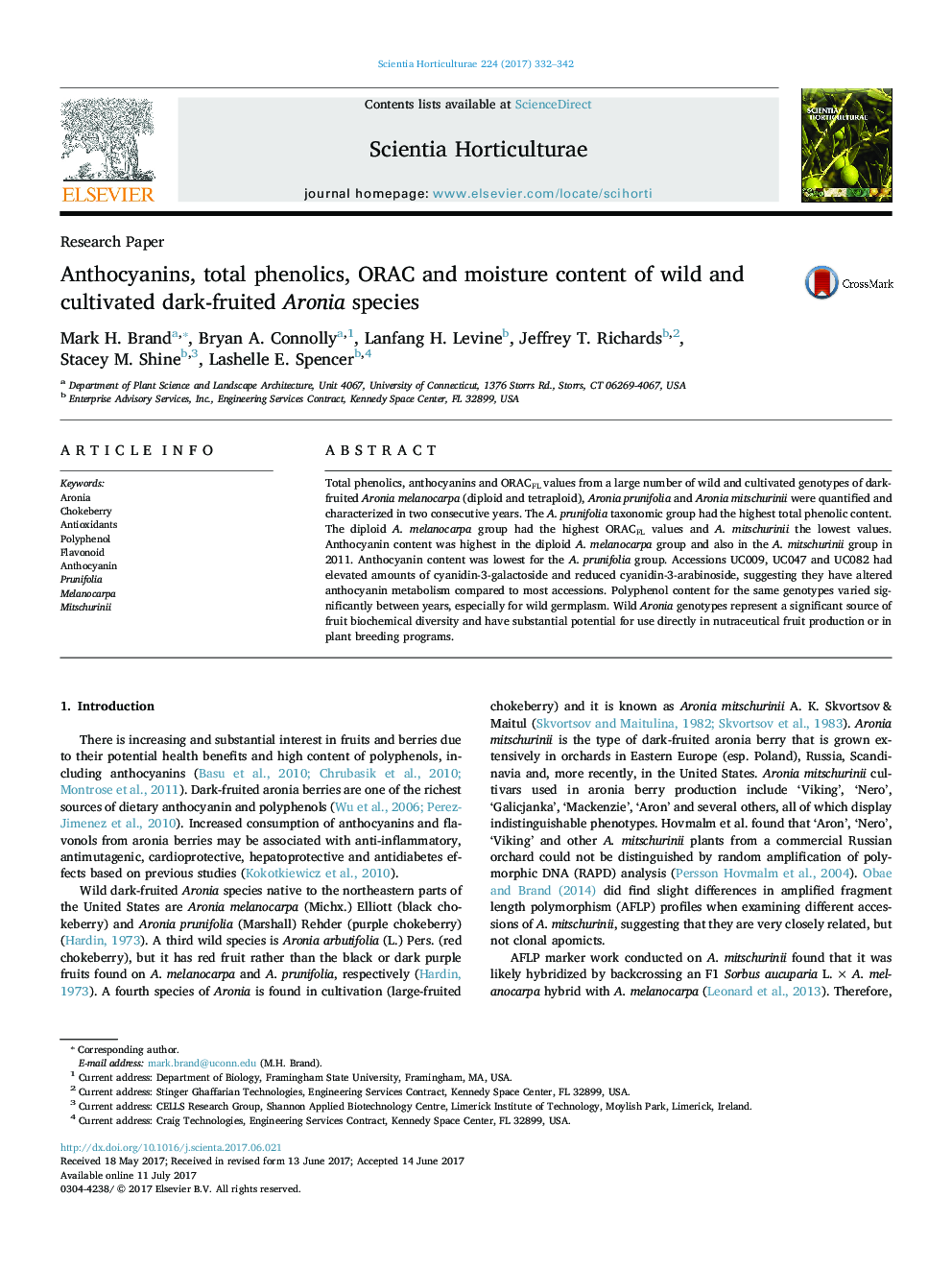| کد مقاله | کد نشریه | سال انتشار | مقاله انگلیسی | نسخه تمام متن |
|---|---|---|---|---|
| 5769428 | 1628774 | 2017 | 11 صفحه PDF | دانلود رایگان |

- 2n melanocarpa fruit highest in anthocyanin and ORACFL and lowest in phenolics.
- Prunifolia fruit had the highest phenolic and lowest anthocyanin content.
- Mitschurinii fruit had the highest moisture content and lowest ORACFL.
- Some accessions exhibited unique proportions of different anthocyanins.
- Significant year-to-year changes in polyphenol content were observed.
Total phenolics, anthocyanins and ORACFL values from a large number of wild and cultivated genotypes of dark-fruited Aronia melanocarpa (diploid and tetraploid), Aronia prunifolia and Aronia mitschurinii were quantified and characterized in two consecutive years. The A. prunifolia taxonomic group had the highest total phenolic content. The diploid A. melanocarpa group had the highest ORACFL values and A. mitschurinii the lowest values. Anthocyanin content was highest in the diploid A. melanocarpa group and also in the A. mitschurinii group in 2011. Anthocyanin content was lowest for the A. prunifolia group. Accessions UC009, UC047 and UC082 had elevated amounts of cyanidin-3-galactoside and reduced cyanidin-3-arabinoside, suggesting they have altered anthocyanin metabolism compared to most accessions. Polyphenol content for the same genotypes varied significantly between years, especially for wild germplasm. Wild Aronia genotypes represent a significant source of fruit biochemical diversity and have substantial potential for use directly in nutraceutical fruit production or in plant breeding programs.
375
Journal: Scientia Horticulturae - Volume 224, 20 October 2017, Pages 332-342